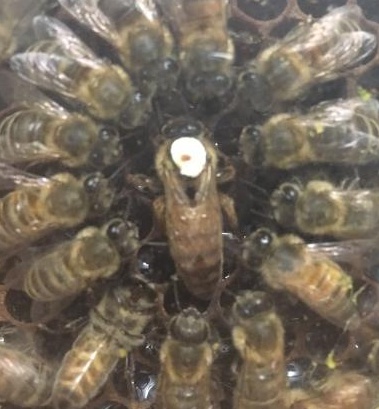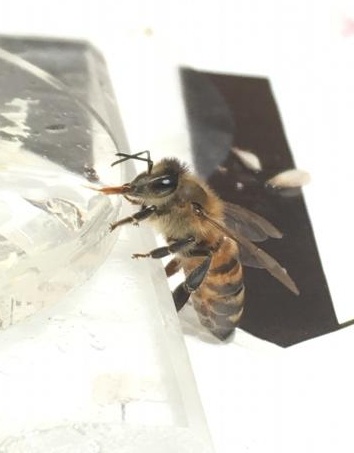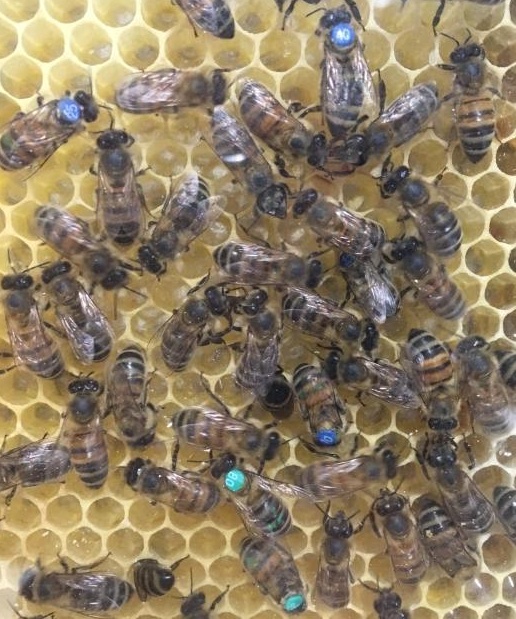
BSc, MSc, PhD
Lecturer
- About
-
- Email Address
- fabio.manfredini@abdn.ac.uk
- Telephone Number
- +44 (0)1224 274144
- Office Address
- School/Department
- School of Biological Sciences
Biography
EDUCATION
2005-2009 PhD: Evolutionary Biology, University of Siena. Dissertation title: “Dealing with a changeable environment: host-parasite relationships in insects”. Advisor: Romano Dallai. Co-advisor: Laura Beani.
2003-2005 MSc: Biodiversity, Ecology and Evolution, University of Siena. 110 (out of 110) cum laude. Thesis title: “The peculiar immunity elusion of Xenos vesparum (Insecta: Strepsiptera) as endoparasite inside Polistes dominulus (Insecta: Hymenoptera)”. Advisor: Romano Dallai.
1999-2003 BSc: Life Sciences, University of Modena and Reggio Emilia.110 (out of 110) cum laude. Thesis title: “Public perception of Genetically Modified Organisms”. Advisor: Mauro Mandrioli.
EMPLOYMENT AND RESEARCH POSITIONS
From Jan 2020 Lecturer in Functional Genomics, School of Biological Sciences, University of Aberdeen
2016-2019 Postdoctoral Research Associate Royal Holloway University of London. European Research Council project BeeDanceGap: “Honeybee communication: animal social learning at the height of social complexity”. Project Coordinator: Elli Leadbeater.
2014-2016 Marie Curie Fellow (International Incoming Fellowship) Royal Holloway University of London. Project EVOCOOP: “Multi-level analysis of the evolution of cooperative behaviour in social insects”. Project Coordinator: Mark J. F. Brown.
2013-2014 Leverhulme Postdoctoral Fellow Royal Holloway University of London. Project: “Are bumblebees the Extended Phenotype of nematodes? A transcriptomics approach”. Project Coordinators: Mark J. F. Brown and Seirian Sumner.
2010-2013 Postdoctoral Researcher Penn State University. Project: “Functional Genomics of the Red Imported Fire Ant, Solenopsis invicta.” Project Coordinators: Christina M. Grozinger and DeWayne D. Shoemaker.
- Research
-
Research Overview
I am an evolutionary ecologist interested in understanding how complex behaviours and phenotypic plasticity are regulated at the molecular level. My research focuses on social insects (such as bees, ants and wasps) as these organisms provide a wide range of opportunities to explore how complex animal societies interact with the environment: from the ecosystem services that pollinators like bees provide, to biological invasions as observed for many ant and wasps species. I adopt a multidisciplinary approach in my research, including functional genomics, behavioural assays and molecular tools. I have used a diverse set of study models to address my questions, including fire ants (Solenopsis invicta), paper wasps (Polistes dominula), bumblebees (Bombus terrestris) and honeybees (Apis mellifera).
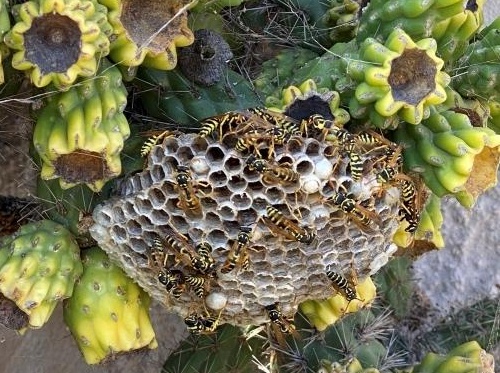
CURRENT OPPORTUNITIES to join the Lab
At the moment all opportunities to join the lab as a PhD student through competitive DTP scholarships are closed. However, I am always available to discuss other options for prospective PhD students and also for MRes students or postdocs to secure their own funding to join the Lab and support their research. If you are interested please contact me by email (fabio.manfredini@abdn.ac.uk): your CV and a brief statement of interests are always a great start.
Current Research
I have established my research group at the University of Aberdeen in January 2020. The following projects have started in October 2022, and they are all linked to new PhD students joing the lab.
The first project, "Importance and sustainability of endangered communities of bee pollinators in the machair, a changing coastal ecosystem", is a CASE partnership funded by NERC QUADRAT and the Bumblebee Conservation Trust. Tegan Gaetano is leading this research, in collaboration with Dr Paul Williams (Queen's University Belfast), Dr Lesley Lancaster (University of Aberdeen), Professor Robin Pakeman (James Hutton Institute, Aberdeen) and the Bumblebee Conservation Trust.
The second project "Novel use of remote and molecular monitoring tools to study plant-pollinator interactions in fruit crops" is funded by the recently established Centre for Doctoral Training PhDs in Plant Sciences at the University of Aberdeen. The proposed research is lead by Jane Devlin in collaboration with Dr Alison Karley and Dominic Williams (James Hutton Institute, Dundee) and Professor Adam Price (University of Aberdeen).
The third project "Identifying the link between viral infections and foraging behaviour in the honeybee brain" is funded by EASTBIO and is lead by Tesni Houlston, in collaboration with Dr Alan Bowman (University of Aberdeen) and Dr Mark Barnett (Roslin Institute).
Other reasearch currently ongoing in the Lab is described below.
Predicting the ecological impacts of invasive alien insects at multiple levels: from genes to communities. This is a PhD project led by Nathanael Litlekalsoy exploring how different life-history traits link to the successful invasion of two charismatic insect species: the harlequin ladybird Harmonia axyridis and the Asian hornet Vespa velutina. The project will take into consideration aspects such as predatory responses, shift in the diet or immunocompetence to understand how the genetics and ecology of these species can be used to predict impact and future patterns of invasion. This research is funded by QUADRAT NERC DTP and is under the co-supervision of Prof Jaimie Dick (Queen's University Belfast) and Dr Greta Bocedi (University of Aberdeen), and in collaboration with Prof Helen Roy (UK Centre for Ecology & Hydrology) and Dr Lori Lawson Handley (University of Hull).
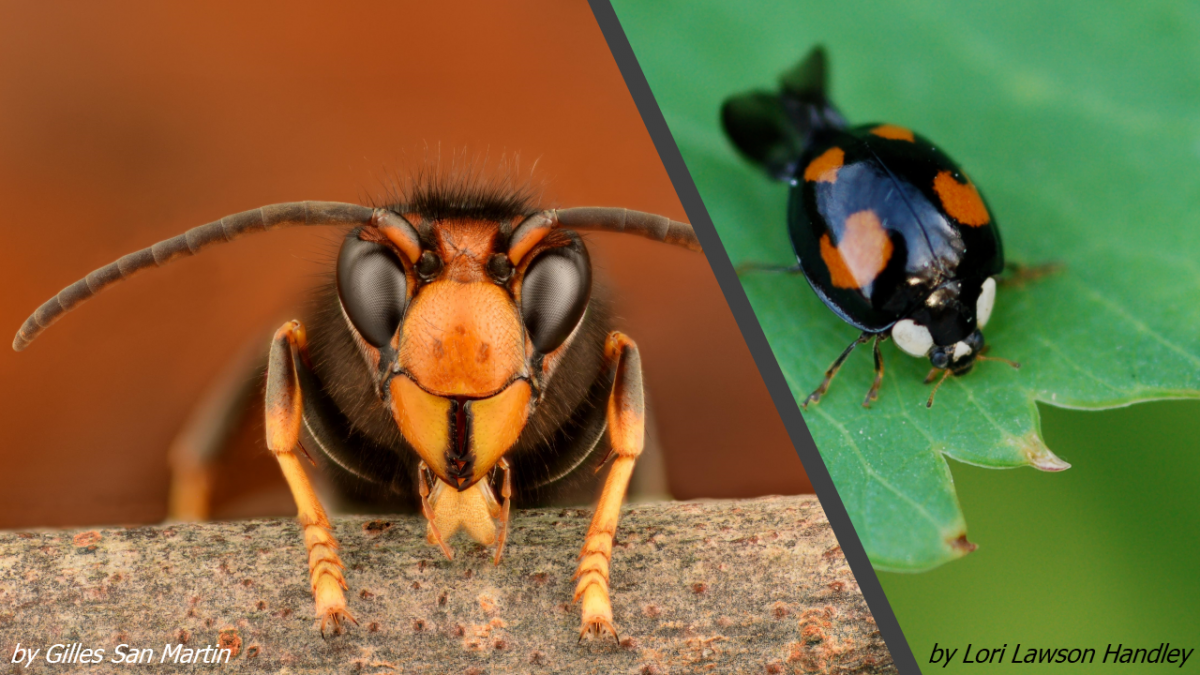
The evolution of the honeybee waggle dance: a population genomics approach. This is a Distance Learning PhD project led by Simon Loughran and under the co-supervision of Dr Kara Layton (University of Aberdeen). This project aims to characterize the evolution of the honeybee waggle dance at the genetic level. Simon will investigate whether key genes associated with the performance of this behaviour are under positive selection in populations of honeybees that are exposed to a range of different environments, from native tropical forests to rural and urbanized environments in Europe and North America. Simon will use open access genomic data and will interrogate them with the most advanced bioinformatic tools currently available.
Elucidating the role of deformed wing virus (DWV) on honey bee cognitive performance through the analysis of brain gene expression. This is a projected initially funded by The CB Dennis British Beekeepers’ Research Trust and in collaboration with Dr Alan Bowman (University of Aberdeen), Dr Mark Barnett (Roslin Institute, The University of Edinburgh) and with Dr David Baracchi (University of Florence, Italy). In this project we are investigating whether the presence of the widespread DWV virus (transmitted by the parasitic mite Varroa destructor) in the honeybee brain impairs bee's cognitive abilities by affecting the expression of key genes in neural tissues. The research assistant for this project, Lauren Dingle, performed behavioural tests (Proboscis Elongation Reflex assays or PER) across a range of honeybee colonies presenting different levels of DWV infection and she quantified viral loads in the brain of these bees. A subset of the samples was processed for RNA sequencing to quantify patterns of gene expression in the mushroom bodies of bees with different viral loads and cognitive abilities. The preliminary results for this project have been presented in a poster at the International Congress of the IUSSI in San Diego in July 2022. A new PhD student in the group, Tesni Houlston will advance this research line as part of her reserach project. Tesni's reserach is funded by EASTBIO BBSRC DTP.
From the dancefloor to dancing bots: understanding spatial organization of honeybee colonies using Kilobots. This is a project in collaboration with Dr Maria Elena Giannaccini (School of Engineering, University of Aberdeen) and funded by NERC UKRI. In this project we are exploring approaches to model the basic principles of social behaviour using small robots (kilobots) capable to move in a coordinated fashion to simulate groups of organisms. A summer student recruited through a NERC research placement program, Niamh Ellis
Gene expression changes underlying lifespan extension in an insect host-parasite interaction. This is a MRes project led by Stephen Lane that aims to identify key genes in the brain of the social wasp Polistes dominula that are associated with lifespan extension caused by the endoparasite Xenos vesparum (Strepsiptera). The project is co-supervised by Dr Davina Derous, a Research Fellow in SBS at Aberdeen and is in collaboration with a team of researchers at the University of Florence (Italy).
Past Research
Implementing a Machine Learning Approach for the understanding of social learning in honeybee foragers. This project was led by Marcell Veiner, a student in Computing Science and Mathematics at the University of Aberdeen, and in collaboration with Dr Juliano Morimoto (University of Aberdeen). In this project Marcell used a transcriptomic dataset originated from a previous large RNAseq experiment to investigate whether brain gene expression data can be used to predict behavioural performance of honeybee dancers and followers involved in a waggle dance event. Marcell is currently preparing a manuscript for submission to a scientific journal for publication. The project was a NERC Funded Research Experience Placement funded by the UKRI. You can read Marcell's blog post about his experience with the project here.
Supervision
Nathanael Litlekalsoy PhD student, started in January 2022
Nate joined the group as a MSc Student in 2020-21 to work on the project: "Effect of social environment on alternative splicing in the brain of ant queens". From January 2022 Nate is leading the project "Predicting the ecological impacts of invasive alien insects at multiple levels: from genes to communities", part of the QUADRAT DTP and funded by NERC. If you want to know more about Nate's reserch and QUADRAT follow this link.
Simon Loughran PhD student, started in January 2021
Simon's background is computer science and software development, and since switching to the study of biology a few years ago he's developed a keen interest in animal behaviour, genetics and insects (especially the Diptera and Hymenoptera). For his PhD he's investigating the evolution of the honey bee waggle dance from a genomics perspective. He's also dad to a toddler, a songwriter, a running coach, and the webmaster for runbundle.com.
Stephen Lane MRes student 2021-22
Project: "Gene expression changes underlying lifespan extension in an insect host-parasite interaction"
Amaris Hackeny MSc Student 2021-22
Project: "Habitat use by bumblebees in an urban environment in Scotland"
Noora Aledris MSc Student 2021-22
Project: "Brain gene expression in a wasp in response to parasitization by a Strepsiptera"
Parker Hill MSc Student 2021-22
Project: "Honeybee brain gene expression in relation to viral loads and cognitive performance"
Niahm Ellis NERC/QUADRAT REP Student 2022
Project: "From the dancefloor to dancing bots: understanding spatial organization of honeybee colonies using Kilobots"
Estefania Hugo Arnabal Honours Student 2021-22
Project: "Consequences of Deformed Wing Virus (DWV) Infection on Cognitive and Immune Gene Expression and Learning Capacity of Apis mellifera"
Gabrielle Young MSc Student 2020-21
Project: "Habitat use by bumblebees in coastal and wetland environments"
Marcell Veiner NERC/QUADRAT REP Student 2020
Project: "Implementing a Machine Learning Approach for the understanding of social learning in honeybee foragers"
Jessie Jungels Honours Student 2020-21
Project: "The role of immunity in honeybee foraging behaviour"
Caitlin McLeod Honours Student 2020-21
Project: "Investigating the relationships between immune-related gene expression in the brain and founding modalities with different levels of social stress in Solenopsis invicta queens"
Funding and Grants
The project "From the dancefloor to dancing bots: understanding spatial organization of honeybee colonies using Kilobots" is funded by NERC-UKRI through a Discipline Hopping Fund (£10,000) and a research experience summer placement to Niamh Ellis (10 weeks in Summer 2022, £2,500).
Attendance to the International IUSSI meeting in San Diego (California) in July 2022 was supported by the Association of Commonwealth Universities through an Early Career Conference Grant to Dr Manfredini (£2,000).
The project on DWV, bee cognition and brain gene expression was supported by The CB Dennis British Beekeepers’ Research Trust (June 2020 - January 2022, £26,932).
The project Transcriptomic profiling of viral infections in the brain of a key pollinator has been funded by the Aberdeen Grant Academy under the call "Internal Funding to Pump-Prime Interdisciplinary Research and Impact Activities" (June-July 2021, £9,950).
The project on machine learning and waggle dance has been funded by The Natural Environment Research Council (NERC-UKRI) in the form of a research experience summer placement to Marcell Veiner (10 weeks in Summer 2020, £2,500).
- Teaching
-
Teaching Responsibilities
I am the coordinator of the new course in Ecological Genomics (BI3312) that will launch in November 2021. Other contributors to the course are Dr Ashish Malik, Dr Kara Layton, Dr Victoria Sleight and Dr Marius Wenzel.
I am also contributing to the following courses:
YEAR 1
BI1009: Frontiers in Biological Sciences (Evolution & Behaviour)
YEAR 2
BI2023: Introduction to Genetics (Population Genetics)
YEAR 3
BI3505: Behavioural Biology
- Publications
-
Page 1 of 2 Results 1 to 25 of 28
Transcriptomic responses to location learning by honeybee dancers are partly mirrored in the brains of dance-followers
Proceedings of the Royal Society B: Biological Sciences, vol. 290, no. 2013, 20232274Contributions to Journals: ArticlesMachine Learning models identify gene predictors of waggle dance behaviour in honeybees
Molecular Ecology Resources, vol. 22, no. 6, pp. 2248-2261Contributions to Journals: ArticlesSocial Isolation and Group Size are Associated with Divergent Gene Expression in the Brain of Ant Queens
Genes, Brain, and Behavior, vol. 21, no. 3, e12758Contributions to Journals: ArticlesA Strepsipteran parasite extends the lifespan of workers in a social wasp
Scientific Reports, vol. 11, 7235Contributions to Journals: ArticlesAltered feeding behavior and immune competence in paper wasps: A case of parasite manipulation?
PloS ONE, vol. 15, no. 12 , e0242486Contributions to Journals: ArticlesA Potential Role for Phenotypic Plasticity in Invasions and Declines of Social Insects
Frontiers in Ecology and Evolution, vol. 7, 375Contributions to Journals: Review articlesPreference of Polistes dominula wasps for trumpet creepers when infected by Xenos vesparum: A novel example of co-evolved traits between host and parasite
PloS ONE, vol. 13, no. 10, 0205201Contributions to Journals: ArticlesCandidate genes for cooperation and aggression in the social wasp Polistes dominula
Journal of Comparative Physiology A: Neuroethology, Sensory, Neural, and Behavioral Physiology, vol. 204, no. 5, pp. 449-463Contributions to Journals: ArticlesDeconstructing Superorganisms and Societies to Address Big Questions in Biology
Trends in Ecology & Evolution, vol. 32, no. 11, pp. 861-872Contributions to Journals: Review articles- [ONLINE] DOI: https://doi.org/10.1016/j.tree.2017.08.004
- [ONLINE] Deposit at Royal Holloway University of London
Neurogenomic Signatures of Successes and Failures in Life-History Transitions in a Key Insect Pollinator
Genome biology and evolution, vol. 9, no. 11, pp. 3059-3072Contributions to Journals: ArticlesSubtle effect of Xenos vesparum (Xenidae, Strepsiptera) on the reproductive apparatus of its male host: Parasite or parasitoid?
Journal of Insect Physiology, vol. 101, pp. 22-30Contributions to Journals: Articles- [ONLINE] DOI: https://doi.org/10.1016/j.jinsphys.2017.06.010
Transcriptomics of an extended phenotype: parasite manipulation of wasp social behaviour shifts expression of caste-related genes
Proceedings of the Royal Society of London. B, Biological Sciences, vol. 284, no. 1852, 20170029Contributions to Journals: ArticlesUnity in defence: honeybee workers exhibit conserved molecular responses to diverse pathogens
BMC Genomics, vol. 18, 207Contributions to Journals: ArticlesDynamic changes in host-virus interactions associated with colony founding and social environment in fire ant queens (Solenopsis invicta)
Ecology and Evolution, vol. 6, no. 1, pp. 233-244Contributions to Journals: ArticlesRNA-sequencing elucidates the regulation of behavioural transitions associated with mating in honey bee queens
BMC Genomics, vol. 16, 563Contributions to Journals: ArticlesTesting male immunocompetence in two hymenopterans with different levels of social organization: ‘live hard, die young?'
Biological Journal of the Linnean Society, vol. 114, no. 2, pp. 274-278Contributions to Journals: Articles- [ONLINE] DOI: https://doi.org/10.1111/bij.12427
Parasitic castration by Xenos vesparum depends on host gender
Parasitology, vol. 141, no. 08, pp. 1080-1087Contributions to Journals: Articles- [ONLINE] DOI: https://doi.org/10.1017/S003118201400047X
Molecular and social regulation of worker division of labour in fire ants
Molecular Ecology, vol. 23, no. 3, pp. 660-672Contributions to Journals: Articles- [ONLINE] DOI: https://doi.org/10.1111/mec.12626
Sociogenomics of conflict and cooperation during colony founding in the fire ant Solenopsis invicta
PLoS Genetics, vol. 9, no. 8, e1003633Contributions to Journals: ArticlesExamining the “evolution of increased competitive ability” hypothesis in response to parasites and pathogens in the invasive paper wasp Polistes dominula
Naturwissenschaften, vol. 100, no. 3, pp. 219–228Contributions to Journals: Articles- [ONLINE] DOI: https://doi.org/10.1007/s00114-013-1014-9
When a parasite breaks all the rules of a colony: morphology and fate of wasps infected by a strepsipteran endoparasite
Animal Behaviour, vol. 82, no. 6, pp. 1305-1312Contributions to Journals: Articles- [ONLINE] DOI: https://doi.org/10.1016/j.anbehav.2011.09.012
Parasitic infection protects wasp larvae against a bacterial challenge
Microbes and Infection, vol. 12, no. 10, pp. 727-735Contributions to Journals: Articles- [ONLINE] DOI: https://doi.org/10.1016/j.micinf.2010.05.001
The strepsipteran endoparasite Xenos vesparum alters the immunocompetence of its host, the paper wasp Polistes dominulus
Journal of Insect Physiology, vol. 56, no. 3, pp. 253-259Contributions to Journals: Articles- [ONLINE] DOI: https://doi.org/10.1016/j.jinsphys.2009.10.009
A difficult choice for tiny pests: host-seeking behaviour in Xenos vesparum triungulins
Ethology Ecology & Evolution, vol. 22, no. 3, pp. 247-256Contributions to Journals: Articles- [ONLINE] DOI: https://doi.org/10.1080/03949370.2010.502319
Implication of the Mosquito Midgut Microbiota in the Defense against Malaria Parasites
PLoS Pathogens, vol. 5, no. 5Contributions to Journals: Articles- [ONLINE] DOI: https://doi.org/10.1371/journal.ppat.1000423

